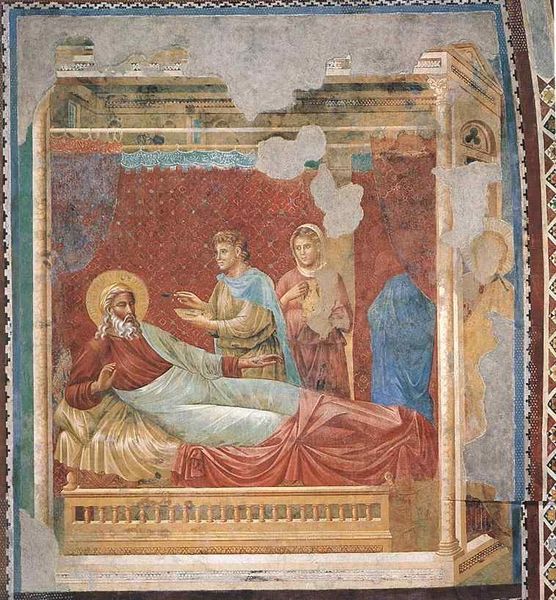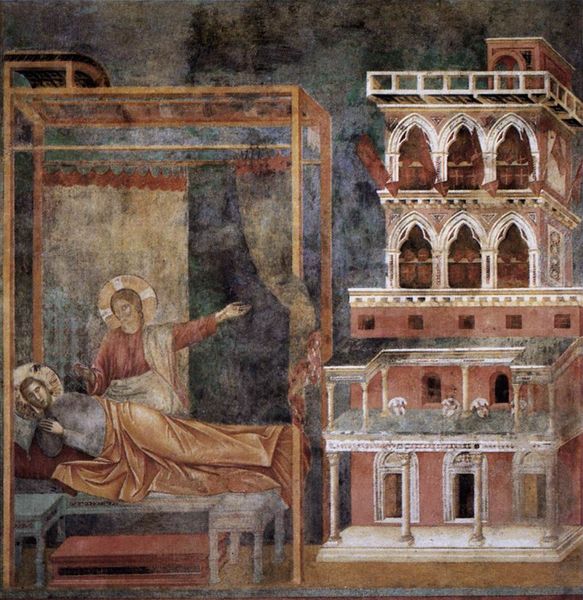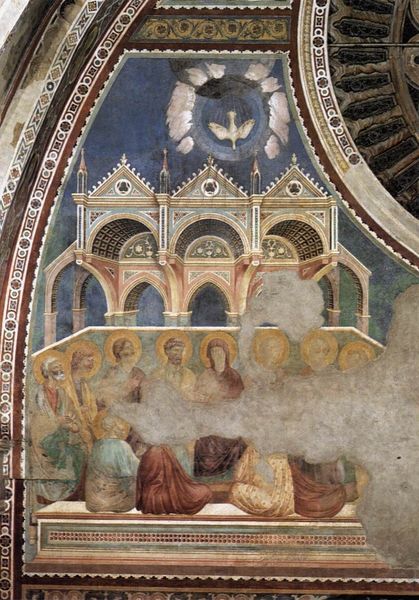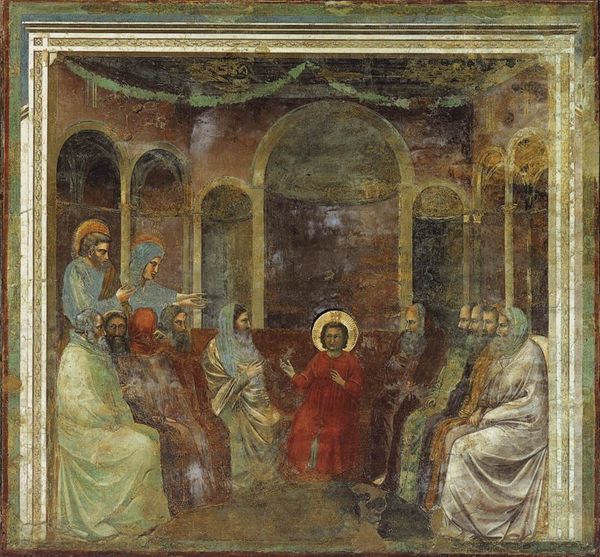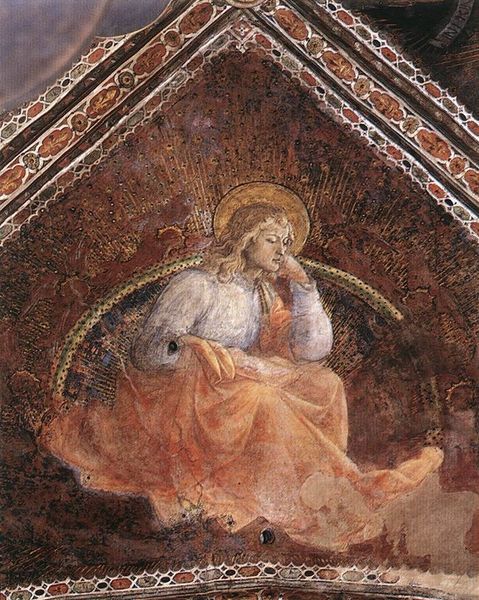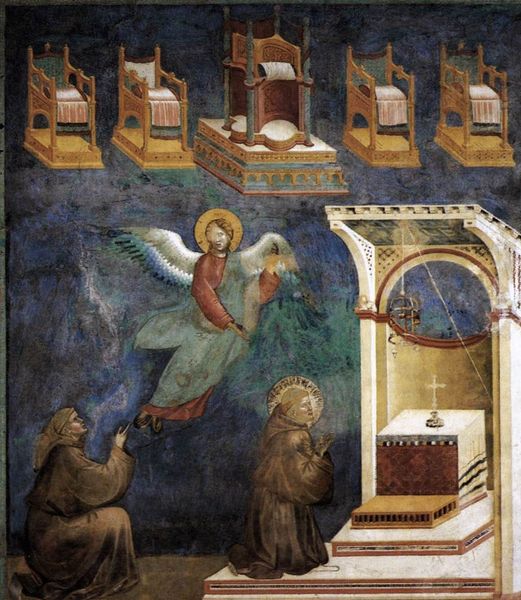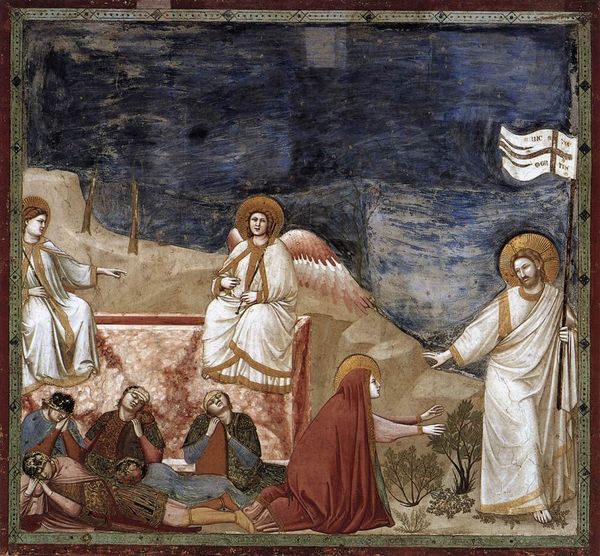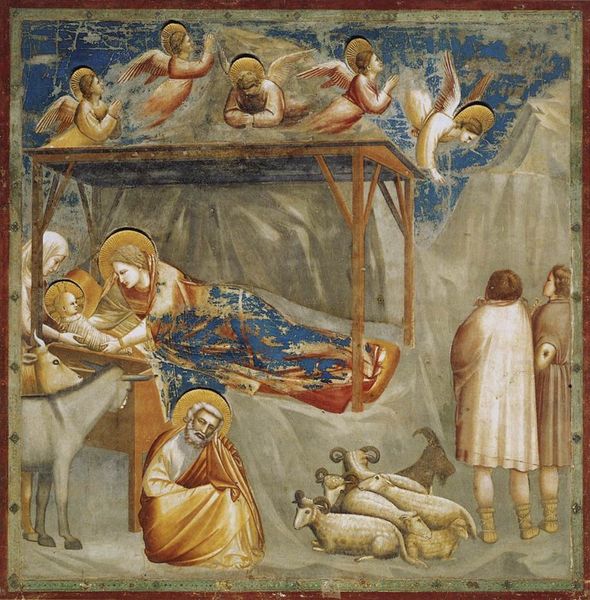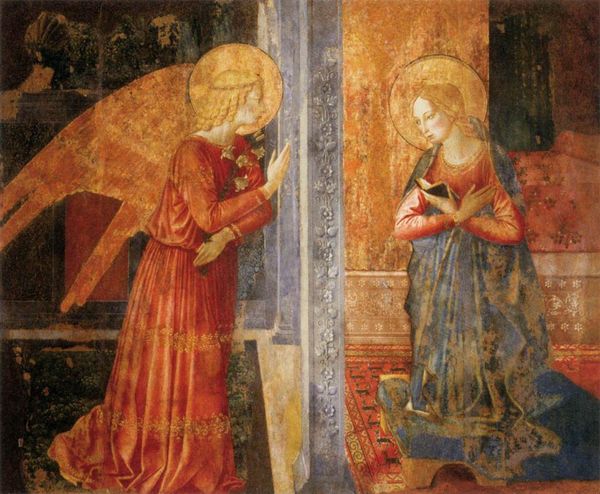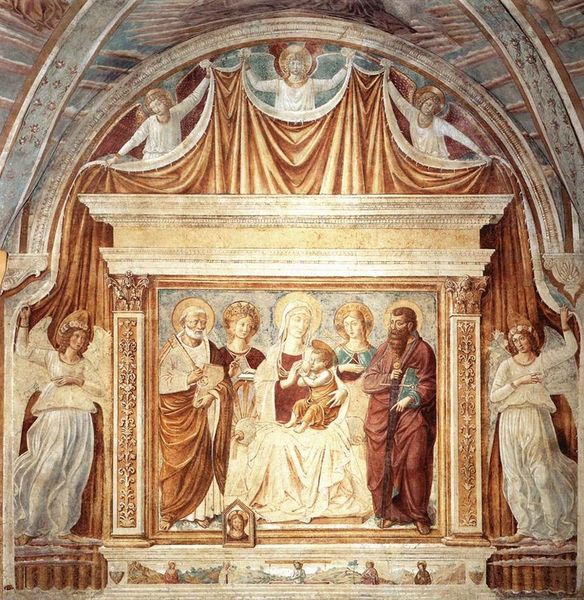
tempera, painting, textile, fresco
#
narrative-art
#
tempera
#
painting
#
prophet
#
textile
#
holy-places
#
figuration
#
text
#
fresco
#
handmade artwork painting
#
oil painting
#
christianity
#
men
#
painting painterly
#
history-painting
#
italian-renaissance
#
christ
Copyright: Public domain
Editor: We're looking at Giotto's fresco, "Isaac Blessing Jacob," from around 1290, located in the Basilica of Saint Francis of Assisi. The composition feels surprisingly intimate, despite being a religious scene in a grand church. How do you interpret the setting and the depiction of this biblical scene within its historical context? Curator: This fresco offers insight into the socio-political function of religious art in the late 13th century. Consider where it is placed: the Basilica of Saint Francis. It aimed to teach scripture to a largely illiterate population. Giotto’s humanized portrayal of Isaac and Jacob departs from more formal Byzantine styles and aimed to be relatable. What message do you think this accessibility conveyed to viewers at the time? Editor: It makes them feel part of the story, less distant from these biblical figures? Perhaps, less intimidated by the Church itself? Curator: Precisely. By grounding religious narratives in relatable human emotion and spatial settings, Giotto was shaping a new visual language. Think about the power dynamic inherent in the act of blessing, in the visual communication within that room. Giotto uses light and gesture to emphasize key figures and events, furthering their roles within society, where the divine held authority. Can you think of ways that shift might play out? Editor: So it's not just about illustrating the Bible; it's about communicating the Church's power and how the people connect to it? That reframes the whole image! Curator: Exactly! It's a powerful intersection of artistic skill and social function, something that would influence painting for centuries. Editor: I’ll never look at religious art the same way again! Seeing how it directly relates to society gives it so much more depth. Curator: Indeed! It allows us to consider how those early images still hold power and influence, even now.
Comments
No comments
Be the first to comment and join the conversation on the ultimate creative platform.
